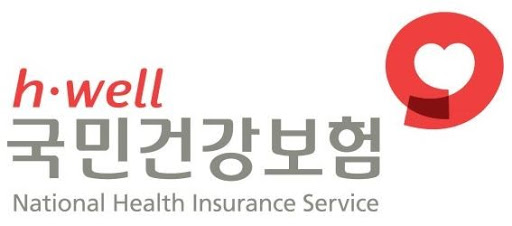
The National Health Insurance System (NHIS) (국민건강보험공단, 國民健康保險工團, gungmin geongang boheom gongdan), frequently called the National Health Insurance Corporation (NHIC), was started in 1977 while long-term care insurance started in 2008. Out of the four social insurances in Korea, this is the group you’ll probably engage with the most. Contact information is located here.
If you are employed on a full-time basis, you should already be enrolled in this. While enrollment in this will probably be mandatory for you, enrollment in private insurance is optional. As of 16 July 2019, they expanded mandatory enrollment to include anyone with a foreign passport living in Korea for six months or more. Details are in the announcement below and this is the highest quality image we were able to find.
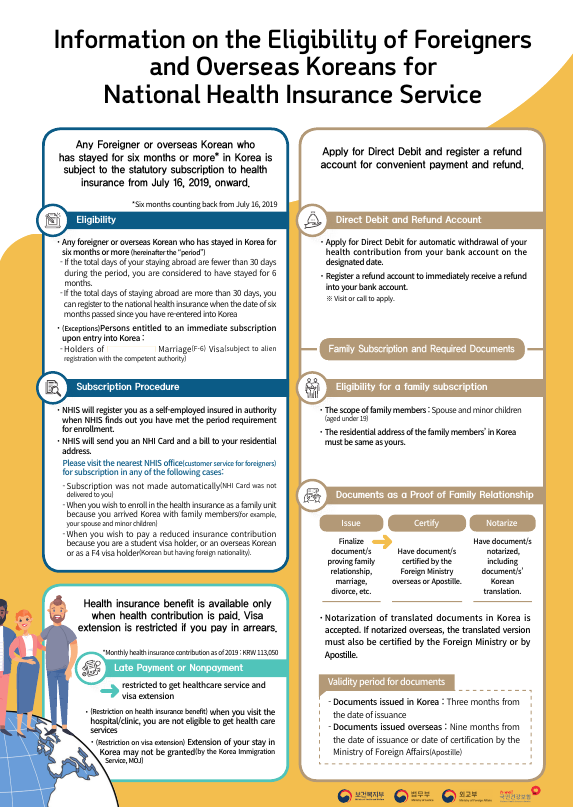
For a much longer version of enrollment information click here to see a 1 megabyte version that is several pages long. Their website has a number of several-page PDFs in a number of languages giving a nice overview of the system. For simplicity, they are hosted here as well. Note, these are large files going from 7.5 megabytes to 10 megabytes. Click the related link to see it in the language you want: Korean, English, Chinese, Japanese, Indonesian, Mongolian, Russian, Thai, and Vietnamese.
The National Health Insurance Service has a list of procedures, treatments, and prescriptions and a price for each. Every medical facility has their own prices for these, which are higher than the price the insurance will cover. Typically, prices at smaller clinics will be very close to the insurance price so your out of pocket expenses will be rather small. Meanwhile, large well-known hospitals with several hundred beds will charge more as they have more overhead and their staff are believed to be some of the best in their field.
For an example, let’s say you want to get the flu shot. The National Health Insurance Service will cover up to KRW X. It doesn’t matter where you go to get the shot, it will cost more than X but a smaller clinic might charge KRW X + KRW 7,000 while a very large hospital might charge KRW X + KRW 40,000.
Exceptions do exist so let’s highlight a few. The first exception is if you first go to a smaller clinic, for example, an ear nose throat specialist with one doctor. Let’s say they discover a problem and tell you surgery is necessary. If you would prefer to undergo the surgery at a larger hospital, you can ask this clinic for a referral. With a referral, you can go to the larger hospital and pay a lower price.
The other exception you might encounter would be at a larger hospital if they have a multilingual service. There are limitations with what a hospital can charge, but there is a loophole if they provide a special service with foreign language support. The names for these widely differ from hospital to hospital, but will be something along the lines of global clinic or international center. If you go through one of these they will offer English, and perhaps support in another language, by help of an interpreter who will guide you with where to go and help interpret the doctor you meet with. As they are offering not just the medical help, but also the additional linguistic service, they are allowed to charge higher prices than if you went by yourself to see a doctor 1:1 and attempted to communicate directly. Health is very important, and fully understanding what your doctor advices you to do is critically important, which is why some people don’t mind paying more.
Once you have registered with the National Health Insurance Service, when you visit a hospital or clinic make sure you tell them your resident registration number written on the front of your Residence Card, commonly known as ARC. The number on your card is connected to you in more ways than you might know, including insurance, your address, visa status, car registration, and more. When the health center inputs your number into their computer, they will see you have insurance and will charge you the correct price.
Contributions into the program are paid on a monthly basis with the employer paying 50% and the employee paying 50%. Those who are self-employed will pay the full 100% by themselves and their contribution will change depending on their income. The size of the contribution is based on your monthly salary multiple by a percent and an additional contribution toward long-term care insurance is the price of the health insurance multiplied by another number. The percentage sometimes changes and for health insurance was 6.46% in 2019 and 6.67% in 2020. The percentage for long-term care insurance was 8.51% in 2019 and 10.25% in 2020. Here is an announcement in English detailing the price changes or click here to see the Korean version.
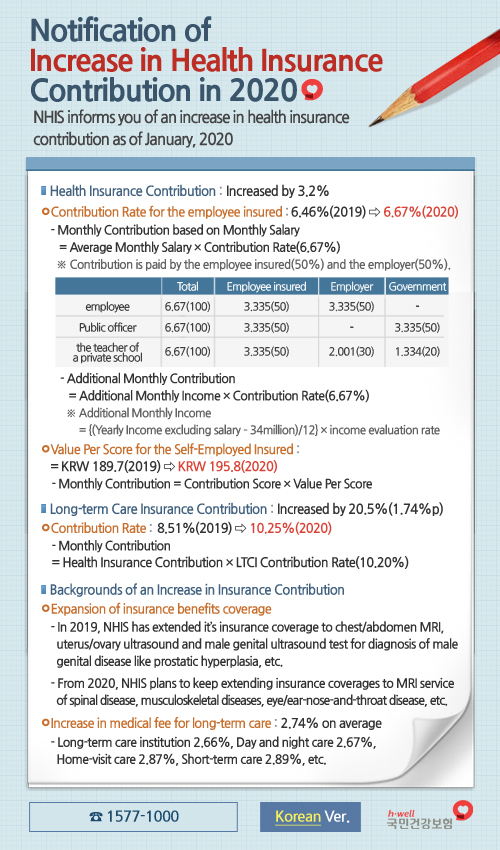
If you get a letter from the National Health Insurance Service, it will look like one of the two examples below with their logo at the top left side. If you want to see the images more clearly, click the pictures to see a larger version.
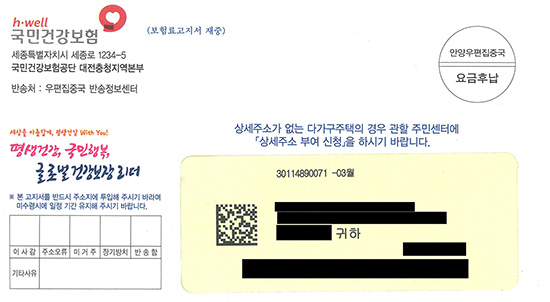

The rear side of their letters is easy to distinguish with the red at the top. If you want to see the image more clearly, click the picture to see a larger version.
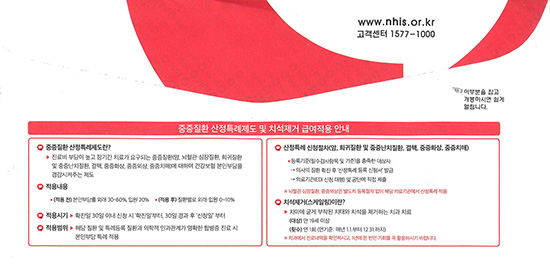
For more information on the National Health Insurance System visit their website with Korean, English, Japanese, Chinese, and Vietnamese support, see the Korean Wikipedia page, or call them at 1577-1000 (ext. 7) or (033) 811-2000 for support in Korean, English, Chinese, Vietnamese, Uzbek, and Russian. Please note that the multilingual website links and phone numbers sometimes change.
Here are PDF files for the law that the National Health Insurance System is based on from 2015, 2017, and 2019. If you want to know substantially more about the National Health Insurance System, here are 70-page plus overviews from 2015, 2018, and 2019.